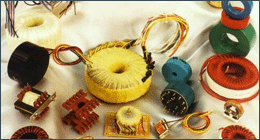All transformers need a core to function, but not all cores are created equal. Different cores provide different characteristics to meet the varying demands of electronic devices (big and small). Do not use core interchangeably. The geometry and size of a core dictate power output. It also determines the current and voltage of the transformer. Once you choose a material, the next step is custom coil winding.
Toroidal cores are the conduit for the magnetic flux that begins to flow when AC signals are placed on the primary coil. Different core materials, such as amorphous cores or laminated steel, endow toroidal core winding with the features necessary to function within specific applications.
Although there are many options for cores, steel cores are amongst the most used. Steel is broken down into three popular categories. These three include:
Amorphous Steel
Thin strips of amorphous steel are used because they provide great reliability in mid to high frequencies. This material reduces the flow of eddy currents, and it is the preferred material for the custom coil winding of mid-frequency transformers efficient.
Solid Steel
This type of steel creates a strong magnetic field. It has become less popular as of late because it produces a high amount of eddy currents. They are also known to create heat that affects the performance of the transformer.
Silicon Steel
Thin strips of silicon are pressed together to create a core. The cores are ideal for performance in 50, 60, and 400 Hz electrical transformers. This material creates efficient magnetic propagation, which helps heat dissipation and the reduction of eddy currents. When you need toroidal coil winding, you should consider silicon steel.
Toroidal Coil Winding
- Comparing Toroidal Transformations and Other Transformers
In many cases, engineers choose toroidal transformers and custom coil winding over other conventional transformers. - Three Important Considerations for Toroid Coil Winding
- Using Toroids for Efficient and Cool Operations

